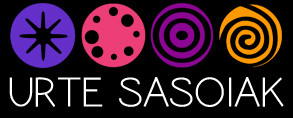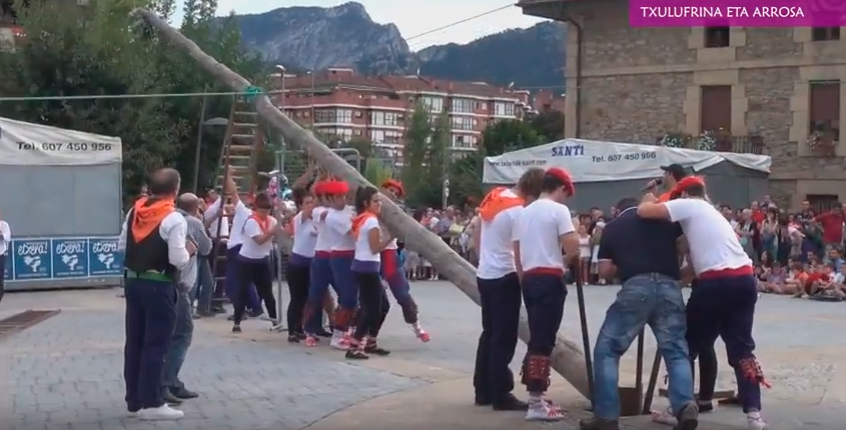The region of Durango in Bizkaia is home to countless traditions. An example is the set of dances known as Dantzari-dantza. They are executed by eight dancers to the sound of the txistu at village, neighbourhood and brotherhood celebrations.
Already in 1881 Humboldt, the German naturalist, mentioned it in one of his works. The various movements, melodies, and so forth, are described as witnessed by him in Durango during a trip to the Basque Country.
The tradition continued uninterrupted and has since spread to every corner of the territory.
It is a typical dance of Durango and environs: Abadiño, Berriz, Durango, Elorrio, Garai, Iurreta, Izurtza, Mañaria and Otxandio.
On the eve of the patron saint’s day, the dancers erect the so-called Donienatxa (St John’s tree). It is the tall trunk of an oak or any other tree lopped, except for its upper branches, stripped and embellished with vegetables, bay leaves and other greeneries, and will remain in place during the course of the festivities. Dressed in civilian clothing, the dancers perform a final rehearsal of the Dantzari-dantza and Erregelak dances before the beginning of the celebration. Should the txistu player be absent, they will dance to the tune of an old folk song: “The tip of the foot is high up and the sky still higher up. If you cannot lift your foot, you’d better lower your head”.
Dancers enjoyed a certain prestige in the past. Being a dancer was every young man’s dream, but only those picked by the txistu player and the local authorities got to dance at the festival. After the selection came the rehearsals, and finally the exhibition. Things have changed over time. Nowadays dance groups organise the event and female dancers join in.
On the feast day dancers marched in procession to the church alongside the authorities and occupied a prominent place during the service. In Garai, it is still the dancers themselves who bear the image of the saint as they parade between St Michael’s and St John’s to the notes of the March of St Ignatius. Along the route they stop at the square and execute the Gernikako Arbola dance, which is exclusive to Garai.
Dantzari-dantza concerns a set of dances. A dance called Agintariena or Ikurrin-dantza opens the show. The dancers file as they fly the flag and honour the authorities. Zortzikoa, Banangoa, Binangoa, Launangoa, Ezpata-jokoa, Makil-jokoa and Txontxongiloa complete the exhibition. Banangoa, Binangoa, Launangoa and Zortzikoa are performed in turns by one, two, four and all eight members of the group accordingly, so that dancers can show their skill. Short and long swords are used for the Ezpata-jokoa and sticks for the Makil-dantza. The Txotxongiloa parody is said to reenact the capture and execution of a thief.
The Esku-dantza chain dance closes the festival. Male dancers at the beginning and end of the chain invite women to join in. These days there is no distinction between married and single men or women. That, however, has not always been the case. Formerly in Garai single men danced on St James’ Day. Married men had to wait until the following day, St Anne’s Day. On that same day married women would, by tradition, enjoy chain dancing to the rhythm of the drum.




